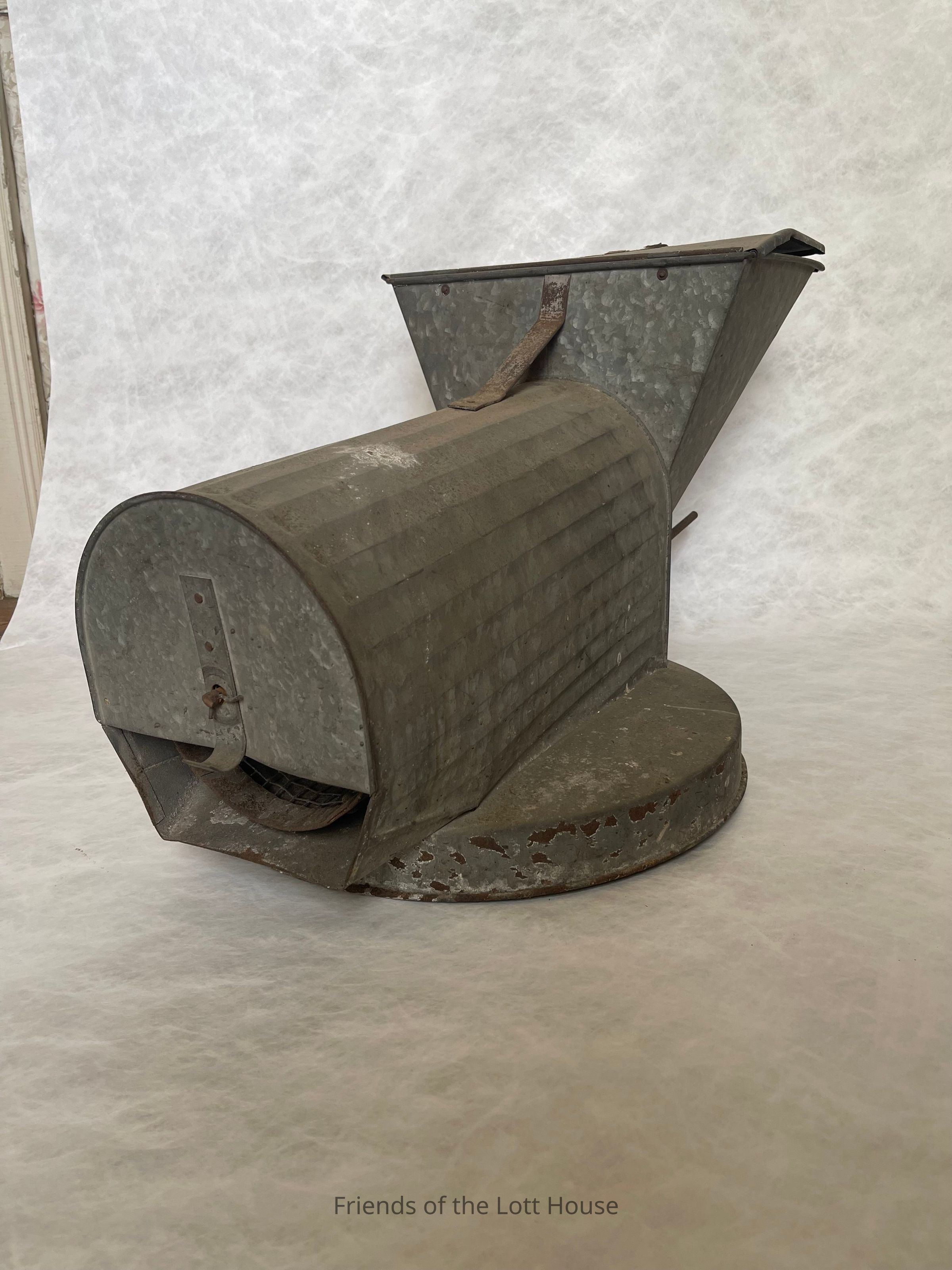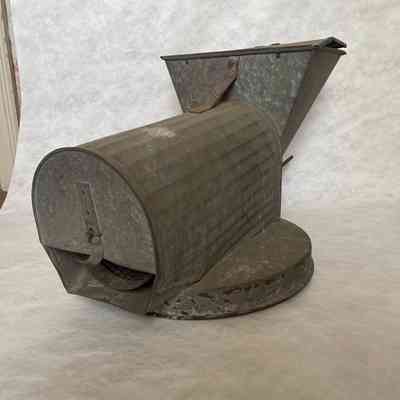Feed Grinder

A feed grinder is a machine used in agriculture to grind or crush feed materials such as grains, seeds, and other ingredients used to make animal feed. This process helps to break down the feed into smaller particles, making it easier for livestock to digest and absorb the nutrients People have used feed grinders for centuries, with the earliest examples dating back to the use of mortars and pestles. Feed grinders were particularly important during the 19th and early 20th centuries. Before the widespread use of grinders like this, farmers relied on more labor-intensive methods of preparing feed for livestock, often grinding by hand or using makeshift tools. The grinder revolutionized farm animals' feeding, increasing agricultural efficiency and productivity. This particular grinder from our collection dates back to the early-to-mid 20th century. Grains, corn, and other feed materials were put into the machine, while the hand crank turned the internal mechanism that ground the feed into smaller pieces. The barrel and round base ensured the device was stable during operation, and the lip was a thoughtful design choice to prevent spillage by allowing the grinder to rest securely on a container. This feed grinder was made by NESCO — National Engineering and Supply Company—and features the logo “Young Patriot Boy.” The company was recognized for producing high-quality, durable agricultural equipment used by farmers across the United States from the 1860s to the 1950s. Two German immigrant brothers, Frederick G. Niedringhaus (1834-1922) and William F. Niedringhaus (1835-1908), founded the company; they were trained tinsmiths. The company was integral to the founding of Granite City, Illinois, as an industrial hub for iron and steel production. Innovations like enameling tin and political influence, particularly through protective tariffs, fueled NESCO's growth. The company moved to Granite City in the 1890s, where it built extensive mills and helped develop the city. NESCO's success also supported local steel companies, making Granite City a major industrial center.
